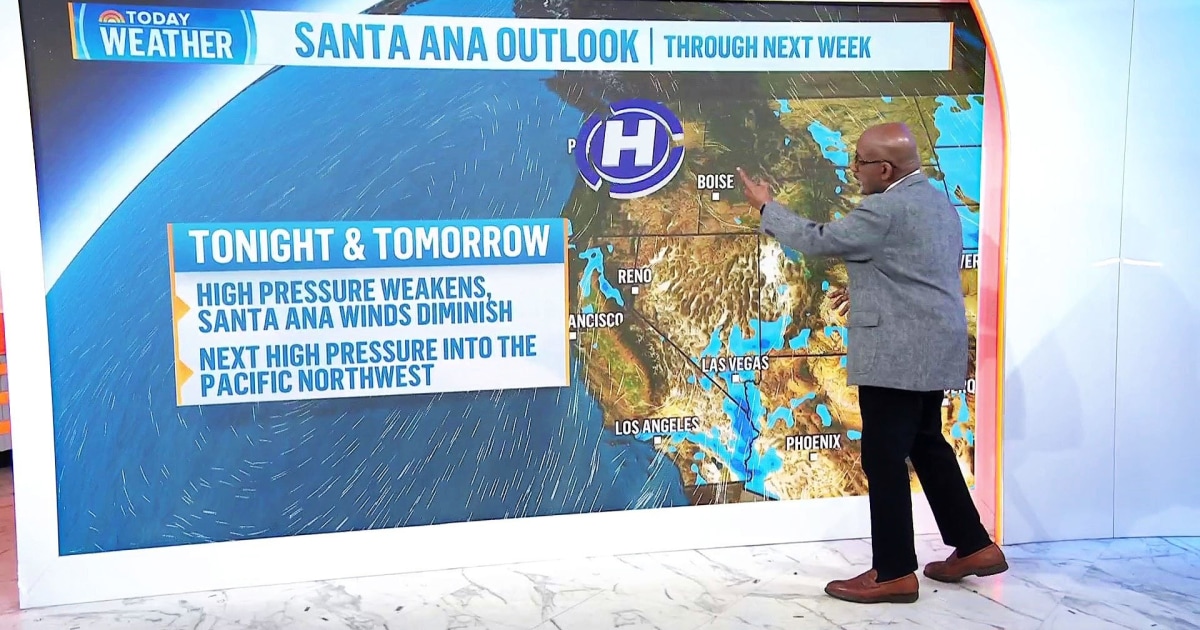Unyielding Santa Ana Winds: A New Challenge Amid Ongoing Wildfires
As the autumn months roll in, the return of the fierce Santa Ana winds presents a daunting challenge for firefighters battling relentless wildfires across Southern California. These powerful winds, known for their dry, warm gusts, can drastically change the landscape of wildfire management, intensifying already critical situations. With each gust, the stakes rise for communities, wildlife, and firefighters alike.
The Nature of Santa Ana Winds
Santa Ana winds typically occur between late summer and early winter, originating from high-pressure systems over the Great Basin. These winds sweep down through the coastal mountain ranges and into the valleys, bringing with them not just heat but also a significant drop in humidity. This combination creates an environment ripe for wildfire ignition and rapid spread.
- Characteristics: Santa Ana winds can reach speeds of over 60 miles per hour, with gusts capable of exceeding 80 miles per hour in certain areas.
- Impact on Conditions: The winds dry out vegetation, making them more susceptible to catching fire.
- Geographic Influence: The winds are particularly potent in areas like Los Angeles, Orange County, and the Inland Empire, where the terrain funnels the winds and amplifies their effects.
As these winds return, the potential for new fires emerges, complicating the already difficult task of containing existing blazes. Firefighters must navigate not only the flames but also the unpredictable and often dangerous weather conditions.
Current Wildfire Situation
As of now, several wildfires are already raging across California, fueled by the dry conditions and the omnipresent threat of Santa Ana winds. The California Department of Forestry and Fire Protection (CAL FIRE) has reported increased fire activity, with multiple incidents resulting in evacuations and property damage.
Firefighters are on high alert, employing various strategies to combat these blazes:
- Controlled Burns: In some areas, controlled burns are utilized to reduce the amount of dry vegetation that can fuel wildfires.
- Firebreaks: Creating firebreaks—strips of land cleared of vegetation—can help slow the spread of fire.
- Aerial Support: Helicopters and planes are deployed to drop water and fire retardant on active fires, providing critical support to ground crews.
Community Resilience and Preparedness
In the face of these challenges, communities are not sitting idly by. Residents are encouraged to prepare for the possibility of evacuation and to take steps to protect their homes:
- Defensible Space: Homeowners are advised to create defensible space around their properties by removing dead vegetation and using fire-resistant landscaping.
- Emergency Kits: Having an emergency kit ready, including essentials like food, water, medications, and important documents, can make a significant difference during an evacuation.
- Stay Informed: Monitoring local news and fire department updates can help residents stay aware of evolving situations and evacuation orders.
Community organizations and local governments are also stepping up their efforts to ensure residents are well-informed and prepared. Workshops on fire safety and preparedness are being held throughout the region, empowering individuals and families to take action.
Environmental and Economic Impacts
The unyielding Santa Ana winds and the wildfires they exacerbate have far-reaching consequences beyond immediate threats to life and property. The environmental impact is profound, affecting air quality, wildlife habitats, and ecosystem stability.
Moreover, the economic ramifications are substantial:
- Property Damage: Wildfires can lead to devastating losses for homeowners, businesses, and local economies.
- Insurance Costs: Rising wildfire risks can lead to increased insurance premiums, making it more challenging for residents to afford coverage.
- Tourism Impact: Areas affected by wildfires may see a decline in tourism, as visitors avoid regions with smoke and fire-related hazards.
Addressing these challenges requires a multifaceted approach, involving not only firefighting efforts but also community resilience initiatives and long-term planning to mitigate future risks.
Innovative Solutions and Future Strategies
As the frequency and intensity of wildfires increase, innovative solutions are emerging. Research into climate-resilient landscaping, advanced firefighting technologies, and community-based preparedness programs are becoming more prevalent. Some of these strategies include:
- Fire-Resistant Building Materials: Promoting the use of fire-resistant materials in construction can greatly reduce fire risk.
- Community Fire Watch Programs: Engaging citizens in monitoring fire risks and reporting incidents can enhance early detection and response.
- Smart Technology: Utilizing drones and satellite imagery to map fire-prone areas and monitor active fires can improve firefighting tactics.
Moreover, collaboration between state, local governments, and non-profit organizations can lead to more comprehensive strategies that address both immediate needs and long-term resilience.
Conclusion
The return of the unyielding Santa Ana winds presents a formidable challenge as California grapples with ongoing wildfires. However, through preparedness, community engagement, and innovative solutions, there is hope. Firefighters continue to face the flames with bravery, while communities rally together to protect their homes and loved ones. With continued efforts and awareness, we can work towards a future where the impacts of these winds and wildfires are mitigated, ensuring safety for all.
See more Your Daily Weather



